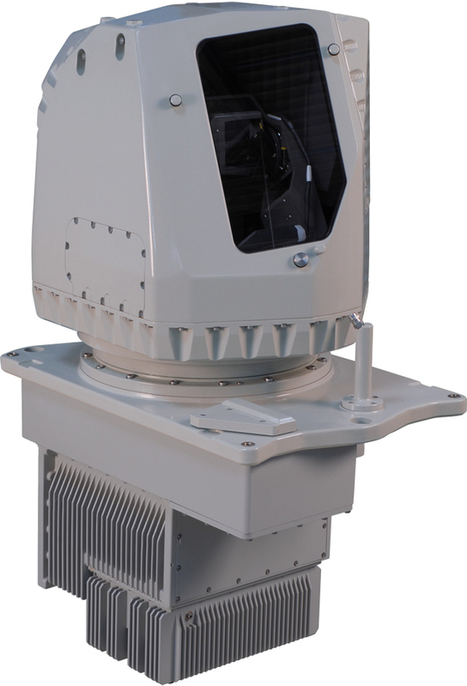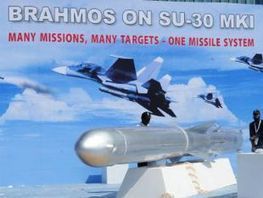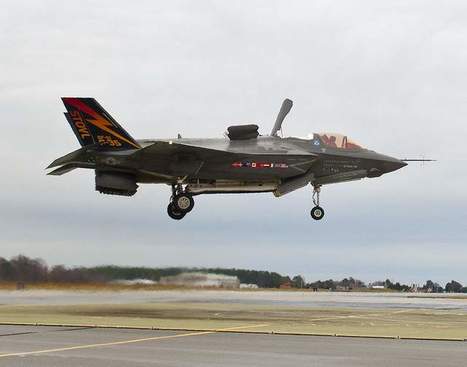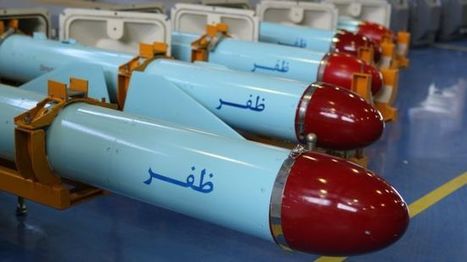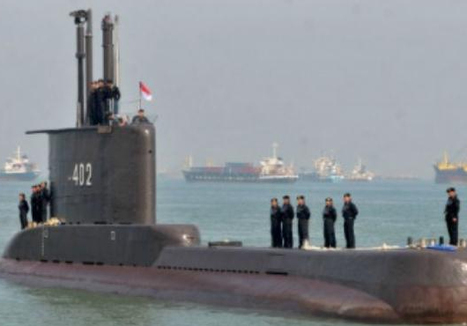 Your new post is loading...
 Your new post is loading...

|
Rescooped by
Romain
from Newsletter navale
March 1, 2013 9:54 AM
|
Sagem (Safran) has signed a new contract with French naval shipyard DCNS, main contractor, for EOMS-NG (Electro-Optical Multifunction System – New Generation) systems that will be installed in 2014 on four large French navy amphibious & projection vessels: three Mistral class BPC ships and the Siroco TCD*.
Each ship will be equipped with two EOMS-NG systems. Developed and produced by Sagem, the EOMS-NG is day-night, multifunction, gyrostabilized optronic system. It offers complete functionality over 360°, including infrared surveillance, identification, tracking, laser rangefinding and fire control.
Controlled from two consoles operating in tandem from the ship's close air defense bridge, the EOMS-NG system will help assess the ship's immediate environment, control self-defense weapons and enhance the safety of helicopter operations. The concept based on high-rate panoramic shots gives it the observation capability equivalent to 100 fixed cameras. This contract from the DCNS represents the latest success for Sagem's wide range of shipborne optronic systems.
The EOMS-NG system is also in production for six French navy Floréal class surveillance frigates and the six Baynunah class corvettes to be deployed by the United Arab Emirates. It is integrated in the DCNS's new Gowind class offshore patrol vessel, L'Adroit. The Vampir-NG panoramic surveillance version has been ordered for Australia's LHD helicopter carriers and air defense destroyers, as well as Anzac class frigates for Australia and New Zealand.
(*) BPC (Bâtiment de Projection et de Commandement) helicopter carrier - projection and command ship ; TCD (Transport de Chalands de Débarquement) : Foudre class landing craft transports ship.
Via Patrick H.

|
Rescooped by
Romain
from Newsletter navale
February 25, 2013 6:09 AM
|
TIRUCHIRAPPALLI: BrahMos Aerospace, an Indo-Russian joint venture, has initiated efforts to develop technology for hypersonic version of the BrahMos missile which can travel at five to seven times the speed of sound, a top company official has said.
"The company is roping in academics to develop the requisite technology before going in for designing and developing missiles which can travel at Mach 5 to 7 (five to seven times the speed of sound). It will be BrahMos II version next to the present variants of Mach 2.8 to 3.5," A Sivathanu Pillai MD & CEO of the company told PTI.
He said the IISc, Bangalore, would collaborate with the company with a 20 member scientists' team developing technologies for high temperature material required to build the missile, cram-jet propulsions and energy modules and the requisite algorithms.
A separate centre has been created for this purpose in Indian Institute of Science while its Russian counterpart, the Moscow Institute of Aviation, would produce technologies for propulsion, kinetic energy modules for the hypersonic version.
In all probability, it would take a minimum of five years for these initiatives to crystallise. In the meantime, BrahMos would work out blueprints for setting up a production centre, choice of vendors for supply of necessary components and investment structure, he said.
After these operations, BrahMos Aerospace would take up development of missiles that can come back to the originating mode after destroying the designated target, he said.
Pillai said modernisation and expansion of manufacturing facilities at Hyderabad and Thriuvananthapuram are also on the cards since the domestic market demand is on the increase.
He said the Indian Air Force had also started placing orders for BrahMos and added that the Army and the Navy are regular customers.
Pillai was here to participate in a felicitation function held in his honour on being conferred the Padma Bhushan Award.
Via Patrick H.

|
Rescooped by
Romain
from Newsletter navale
February 14, 2013 4:18 AM
|
WASHINGTON — The U.S. Defense Department has cleared the F-35B Joint Strike Fighter to resume test flights, roughly a month after the planes were grounded due to engine issues. Flight clearance was restored on Tuesday for the 25 jump-jet variants that are currently active around the country. “All affected hoses have been inspected, and those out of tolerances will be replaced,” Joe DellaVedova, the spokesman for the joint program office (JPO), wrote in a statement. The STOVL variants were grounded after a Jan. 16 test flight at Eglin Air Force Base, Fla., was aborted due to an engine problem that was later identified as a fueldraulic system failure in the jet. The failure was caused by an improperly crimped fueldralic line. After an investigation by the JPO and engine manufacturer Pratt & Whitney, six non-compliant lines were discovered. "We are pleased the F-35B fleet has been cleared to return to flight operations. We worked very closely with our customers and industry partners to conduct a thorough investigation, and we were able to quickly identify the root cause — an improperly crimped fueldraulic hose — which has now been corrected. We took additional steps with our supplier to ensure hose integrity for the entire fleet, and we are confident in the integrity of the overall propulsion system," said Matthew Bates, communications manager, Pratt & Whitney Military Engines. Operations for the F-35A and F-35C variants were not affected.
Via Patrick H.

|
Rescooped by
Romain
from Newsletter navale
February 6, 2013 1:06 PM
|
Northrop Grumman is at the Aero India show highlighting capabilities in intelligence, surveillance and reconnaissance (ISR) including airborne early warning and control (AEW&C) systems and the E-2D Advanced Hawkeye for maritime reconnaissance and unmanned aerial vehicles. “There is a strong interest in the E2-D,” said Tom Trudell, manager, international business development, AEW and BMC2 programs. An E-2D Advanced Hawkeye crew workstation and flyable cockpit simulator are part of the U.S. defense group’s display at the show. The Indian Navy’s current requirement is for one squadron of four AEW aircraft with two options for two more, as spelt out in a request for information (RFI) issued in May 2010. It is believed the navy will require 12 more AEW aircraft in future. India is among the first countries for which the Advanced Hawkeye capability has been approved for export by the U.S. government. The RFI states the aircraft should be able to perform ship and land-based operations. The AN/APY-9 radar, with a two-generation leap in the Indian military’s existing capability, is the backbone of this aircraft and provides greater flexibility and significantly improved detection and tracking over all terrains. India’s requirements might necessitate a wet outer wing panel to give it an 8-hour range. “We are in continuing dialogue with the Indian Navy,” said Trudell. The country’s small requirement, however, is likely to create a challenge to honor offset commitments. The Indian Navy had wanted to add further capability to the export version. The aircraft could be ready just before the new Indian Aircraft Carrier-2 is ready to enter service—possibly with a catapult—in 2018. Meanwhile, Northrop Grumman’s MQ8-B FireScout UAV is awaiting for a formal RFI. The company’s airborne surveillance capabilities are being highlighted at Aero India 2013 with the MQ-4C Triton unmanned aircraft and the lighter-than-air long endurance multi-intelligence vehicle (LEMV).
Via Patrick H.

|
Rescooped by
Romain
from Newsletter navale
January 24, 2013 11:17 AM
|
China is unlikely to use the KJ-2000 or KJ-200 as airborne early warning (AEW) aircraft on its first aircraft carrier, the Liaoning, due to weight, size, and other factors. The Liaoning needs a type of medium-sized AEW aircraft that do not occupy much space, military expert Du Wenlong said in an interview with China Central Television on Jan. 19.
Another military expert Li Li said that an AEW variant of the Xian Y-7 is probably being tested for use as AEW aircraft on the Liaoning, but it still faces problems concerning wing folding and hangar capacity.
Du said that the existing KJ-2000 or KJ-200 is not the suitable AEW aircraft for the Liaoning. Carrier-based AEW aircraft must features light weight and small size, while the two models of AEW aircraft are too heavy. The KJ-2000 weighs more than 100 tons. The KJ-200 weighs dozens of tons, and has a relatively big size. Carrier-based AEW aircraft should have a small size, and occupy small space because every inch of space on an aircraft carrier is extremely valuable. The Liaoning needs a type of medium-sized AEW aircraft which can combat in coordination with the J-15 or the next-generation carrier-based aircraft, so as to form a sound maritime attacking and defense system.
Will the Y-7 variant be used as AEW aircraft on the Liaoning? Li explained that the Y-7 weighs over 20 tons, and meets the first criterion for carrier-based AEW aircraft. However, some other basic factors also deserve attention. The variant must have folding wings to become carrier-based AEW aircraft, but it is difficult to convert the Y-7's conventional wings into folding wings. Furthermore, the variant must be small enough to fit into the Liaoning's hangar, but the Y-7 has a higher height than most other domestic fighter planes. China is probably doing related tests, and can try to solve problems concerning the catapult. If these problems are solved, the size of AEW aircraft will not be a bother anymore.
Du said that the Liaoning is carrying out training to use helicopters as AEW aircraft for the moment, and it is hard to say whether it will continue like this. It is acceptable if China uses AEW helicopters on the Liaoning to combat in coordination with other carrier-based fighter planes, but carrier-based AEW aircraft had better be fixed-wing, so the scope, height, and accuracy of surveillance will meet the military's requirements.
Via Patrick H.
|

|
Rescooped by
Romain
from Newsletter navale
February 25, 2013 6:08 AM
|
Iran’s Islamic Revolution Guards Corps (IRGC) has tested a new short-range cruise missile, which can successfully destroy small- and mid-sized targets.
The domestically designed and developed anti-ship cruise missile, named Zafar (Triumph), was test-fired in the southwestern port city of Bandar Abbas, situated 1,563 kilometers (971 miles) south of the capital Tehran, on Sunday.
During the test, the missile, mounted onto light speed boats, accurately detected designated targets and destroyed them.
Zafar is a short-range, anti-ship, radar-guided missile capable of hitting and destroying small and medium-sized targets with high precision.
On Saturday, the IRGC tested a shoulder-launched anti-aircraft gun, which can be used to shoot down any helicopter intruding into Iranian airspace.
The 20-mm caliber weapon can target helicopters at a distance of 1,400 meters (4,593 feet).
Over the past few years, Iran has held several drills to enhance the defense capabilities of its armed forces and to test modern military equipment and practice tactics.
Via Patrick H.

|
Rescooped by
Romain
from Newsletter navale
February 25, 2013 6:10 AM
|
During NAVDEX 2013 Oto Melara, a world leader in naval weapon systems, presented for the first time a full scale model of its HITROLE-G RWS naval weapon system.
The Oto Melara HITROLE RWS is a modern, fully stabilised, electrically operated and remotely controlled naval
weapon system for policing operations and countering asymmetric threats.
The turret can be easily operated by a single operator through a Remote Control Console and joystick or can be controlled by the ship’s Combat Management System. The combination of the optical sight, the ballistic computer with very high speed computation, the outstanding elevation angle (exceeding the 75°) and the possibility to be equipped with different cannons, grant to the User a multi-role capabilities and a very flexible deployment. The new HITROLE-G is an evolution of the existing HITROLES RWS featuring the GAU-19A triple 12.7 mm gun and a low radar cross-section design.
More than 150 HITROLE RWSs have been produced so far and they are in service with more than 10 Navies or Coast Guards all over the world, in some cases as primary weapon on board of small and fast ships for patrolling and in some others as secondary armament on board of corvettes.
Via Patrick H.

|
Rescooped by
Romain
from Newsletter navale
February 6, 2013 7:43 AM
|
Northrop Grumman is at the Aero India show highlighting capabilities in intelligence, surveillance and reconnaissance (ISR) including airborne early warning and control (AEW&C) systems and the E-2D Advanced Hawkeye for maritime reconnaissance and unmanned aerial vehicles. “There is a strong interest in the E2-D,” said Tom Trudell, manager, international business development, AEW and BMC2 programs. An E-2D Advanced Hawkeye crew workstation and flyable cockpit simulator are part of the U.S. defense group’s display at the show. The Indian Navy’s current requirement is for one squadron of four AEW aircraft with two options for two more, as spelt out in a request for information (RFI) issued in May 2010. It is believed the navy will require 12 more AEW aircraft in future. India is among the first countries for which the Advanced Hawkeye capability has been approved for export by the U.S. government. The RFI states the aircraft should be able to perform ship and land-based operations. The AN/APY-9 radar, with a two-generation leap in the Indian military’s existing capability, is the backbone of this aircraft and provides greater flexibility and significantly improved detection and tracking over all terrains. India’s requirements might necessitate a wet outer wing panel to give it an 8-hour range. “We are in continuing dialogue with the Indian Navy,” said Trudell. The country’s small requirement, however, is likely to create a challenge to honor offset commitments. The Indian Navy had wanted to add further capability to the export version. The aircraft could be ready just before the new Indian Aircraft Carrier-2 is ready to enter service—possibly with a catapult—in 2018. Meanwhile, Northrop Grumman’s MQ8-B FireScout UAV is awaiting for a formal RFI. The company’s airborne surveillance capabilities are being highlighted at Aero India 2013 with the MQ-4C Triton unmanned aircraft and the lighter-than-air long endurance multi-intelligence vehicle (LEMV).
Via Patrick H.

|
Rescooped by
Romain
from Newsletter navale
February 4, 2013 1:08 PM
|
Indra has been awarded the contracts to equip three of the Indonesian Navy's Type 209 submarines with its radar signal detection system and a Low Probability of Intercept radar (LPI) system. The value of this project, awarded by the shipbuilder Daewoo, is in excess of €10M. The electronic defence system will enable the submarines to detect and analyze any radar signals there might be in their surroundings and identify the type of vessel, submarine or aircraft they correspond to. It is a RESM (Radar Electronic Support Measurement) system based on broadband digital reception technology. This type of processing guarantees high sensitivity for the system, even in a dense electromagnetic environment, and extremely quick analysis capabilities. The submarines will accordingly have a considerable advantage in terms of threat identification. The Spanish Navy has chosen this same technology for its S-80 submarine, as have its German and Italian counterparts for their U212A submarines. This solution will operate in conjunction with Indra's Aries-S Low Probability of Intercept radar (LPI). It is a high-resolution system capable of detecting small targets. The low-level signal this radar uses makes it practically undetectable, so that it can “see without being seen”. With this project, Indra has managed to close a major deal to become a technological supplier for the Korean company Daewoo Shipbuilding & Marine Engineering (DSME), one of the world's largest shipbuilders. At the same time, it has strengthened its commercial position in Indonesia and in the Asia-Pacific region, where it has had a stable presence for more than 15 years, operating from offices in China, India, the Philippines, Indonesia, Malaysia and Australia. Indra
Indra is one of the leading multinationals in Consulting and Technology in Europe and Latin America. Innovation is the basis of Indra's business and sustainability, with €550 million invested in R&D&i in the last three years. This figure sets Indra among the top European companies in the sector by investment. Indra’s turnover is around €3,000 million, and 55% of its revenue comes from international markets. The company employs 42,000 professionals and has customers in 118 countries.
Via Patrick H.
|



 Your new post is loading...
Your new post is loading...

